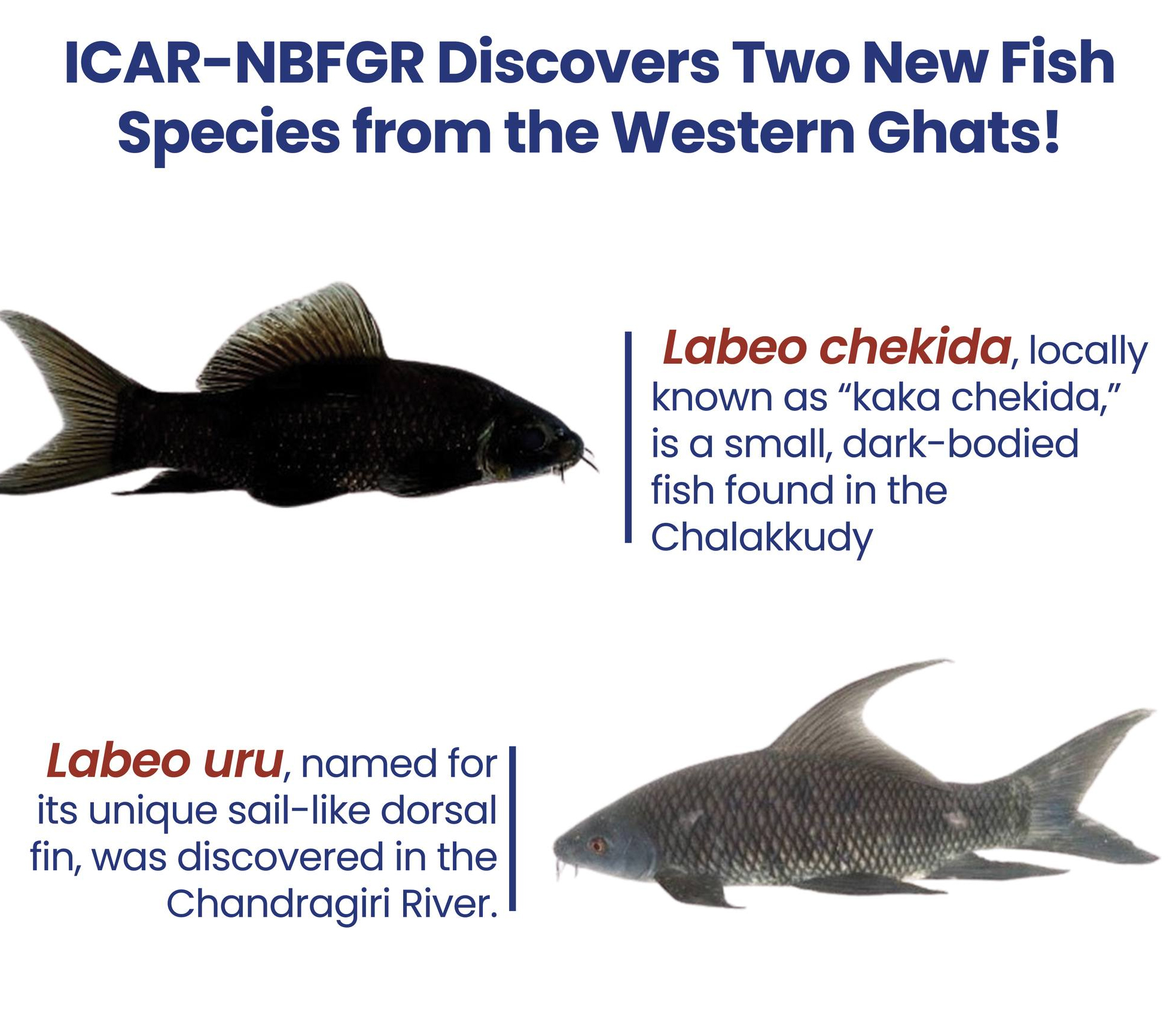Context:
Researchers at the Centre for Peninsular Aquatic Genetic Resources, Kochi, under the National Bureau of Fish Genetic Resources (NBFGR), have identified two new species of freshwater fish from the Western Ghats: Labeo uru and Labeo chekida. Their discovery also resolved a long-standing taxonomic confusion surrounding Labeo nigrescens, a species first described in 1870 but ambiguously classified for over a century.
Newly Identified Species
Labeo uru
- Habitat: Found in the Chandragiri river.
- Naming: The species was named "uru" after the traditional wooden dhow, referencing its sail-like elongated fins.
- Distinctive Features: Elongated fins resembling sails, adapted to the river's flow conditions.
Labeo chekida
- Habitat: Identified in the Chalakudy river.
- Local Name: Known among local communities as "kaka chekida".
- Appearance: A small, dark-bodied fish, distinctive within its ecosystem.
Both species are endemic to their respective river systems, emphasizing the unique ecological character of the Western Ghats.
Resolution of Labeo nigrescens Identity
The study also addressed the longstanding confusion surrounding Labeo nigrescens. Using unique morphological markers such as a kinked lateral line and distinct scale patterns, the team successfully distinguished L. nigrescens from related species. This clarification is significant for the taxonomy of Indian freshwater fish and for conservation biology.
Ecological Significance and Conservation Concerns
The discoveries reinforce the Western Ghats' status as a biodiversity hotspot. The research team highlighted that each river system may harbour unique, endemic species, many of which remain undiscovered.
However, the study raised concerns about threats to freshwater biodiversity from dam construction, habitat destruction, and human encroachments.
The researchers stressed the urgent need for collective conservation efforts to protect these fragile ecosystems. They also called for intensified scientific exploration to uncover and document more unknown species inhabiting these rivers.
Conclusion
The discovery of Labeo uru and Labeo chekida, alongside the resolution of Labeo nigrescens' taxonomic status, marks a significant advancement in the understanding of freshwater biodiversity in the Western Ghats. It highlights the region’s ecological richness and the pressing need for sustained conservation and scientific research to preserve these critical aquatic habitats.







